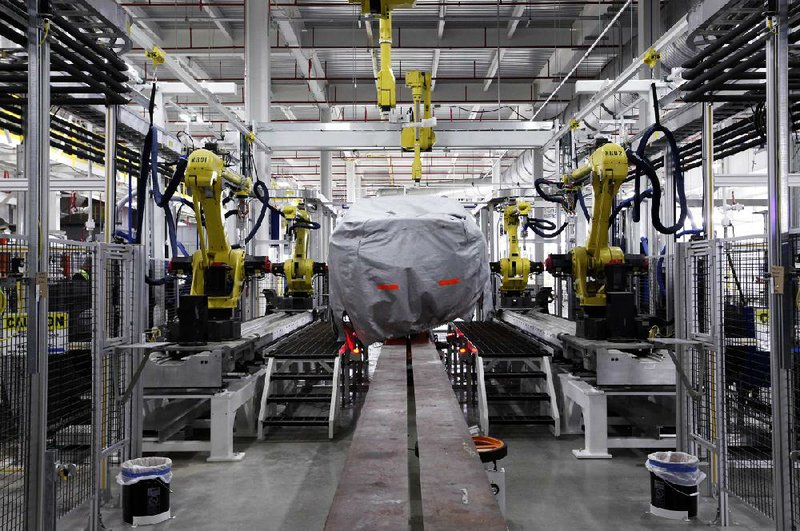The U.S. economy expanded in the third quarter at a faster pace than initially reported, led by the biggest increase in inventories since early 1998. Consumer spending slowed.
Gross domestic product climbed at a 3.6 percent annualized rate, up from an initial estimate of 2.8 percent and the strongest since the first quarter of 2012, the Commerce Department said Thursday. The median forecast of 77 economists surveyed by Bloomberg predicted a 3.1 percent gain.
The buildup in stockpiles risks limiting factory production without stronger demand, economists say. Faster growth in household purchases, which grew at the slowest pace in almost four years, and a rebound in business investment would help companies justify increasing orders and adding workers.
“When you look at the relative optimism you’ve seen in the business surveys, the most logical explanation for the inventory build is a more positive outlook,” said Lewis Alexander, chief economist at Nomura Holdings Inc. in New York, who forecast growth at 3.5 percent. Still, “the big missing ingredient is businesses being sufficiently confident to actually boost hiring and do capital spending.”
Forecasts for the increase in GDP, the value of all goods and services produced in the U.S., ranged from 2.2 percent to 3.6 percent, according to the Bloomberg survey. The GDP reading is the second of three for the quarter, with the final release scheduled for Dec. 20 when more information becomes available.
When excluding inventories, the economy grew at a 1.9 percent rate in the third quarter, down from 2.1 percent in the spring. That’s in line with the same subpar rate that the economy has seen since the recession ended four years ago.
“There’s no momentum here,” said Ian Shepherdson, chief economist at Pantheon Macroeconomics. He said overall economic growth could come in below 2 percent in the current October-December quarter.
Another report Thursday showed first-time claims for jobless benefits dropped by23,000 to 298,000 last week, according to the Labor Department. The less volatile four-week moving average declined 10,750 to 322,250.
Last week’s unemployment-benefit applications nearly matched a September figure that was distorted by late reporting from California. When excluding the September report, last week’s figures were the lowest since May 2007.
Applications have fallen in seven of the past eight weeks, a hopeful sign for job growth at the end of the year.
Last week included the Thanksgiving holiday, which can present challenges for seasonal adjustments. But government officials say there were no special factors affecting the report.
Weekly jobless claims are a proxy for layoffs. The steady decline should help boost job gains at a time when hiring has accelerated.
The economy has added an average of 202,000 jobs a month from August through October, up from an average of 146,000 in May through July. The government will issue its November employment report today.
The pickup in GDP followed gains of 2.5 percent in the previous quarter and 1.1 percent in the first three months of the year.
Americans’ purchasing power rose at a slower pace. Disposable income adjusted for inflation increased at a 2.9 percent annualized rate from July through September after a 4.1 percent advance in the second quarter.
Thursday’s GDP report also included revisions to second-quarter personal income. Wages and salaries increased by $77.2 billion, up from the previously reported gain of $54.6 billion. They rose about $46 billion in the third quarter.
The data also offered a first glance at corporate profits. Before-tax earnings rose at a 1.8 percent rate after climbing at a 3.3 percent pace in the previous period. They increased 5.6 percent from the same time last year.
Gross domestic income, which reflects all the money earned by consumers, businesses and government agencies, increased at a 1.4 percent annualized rate in the third quarter after a 3.2 percent gain in the previous three months.
Information for this article was contributed by Victoria Stilwell and Chris Middleton of Bloomberg News and by Josh Boak and Martin Crutsinger of The Associated Press.
Front Section, Pages 1 on 12/06/2013
